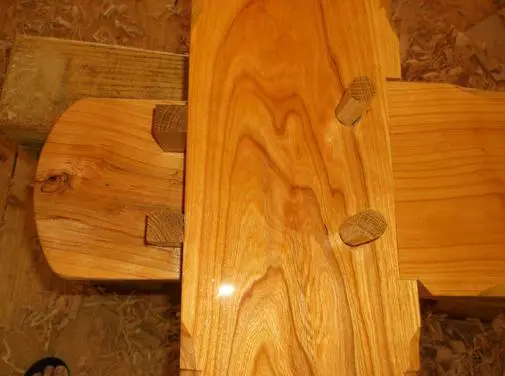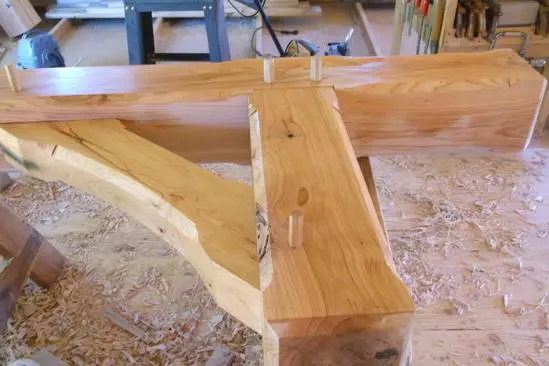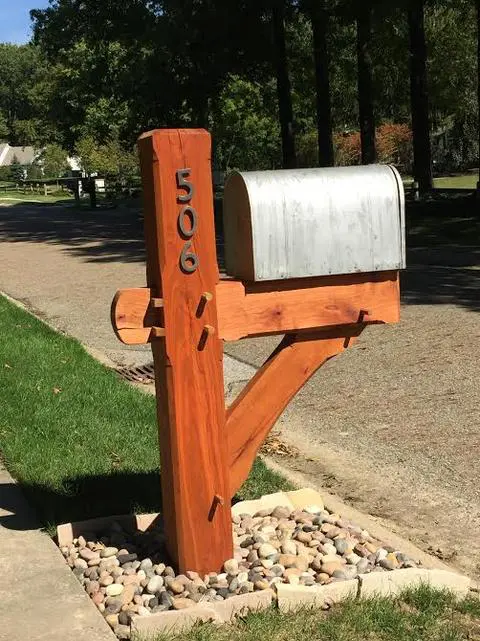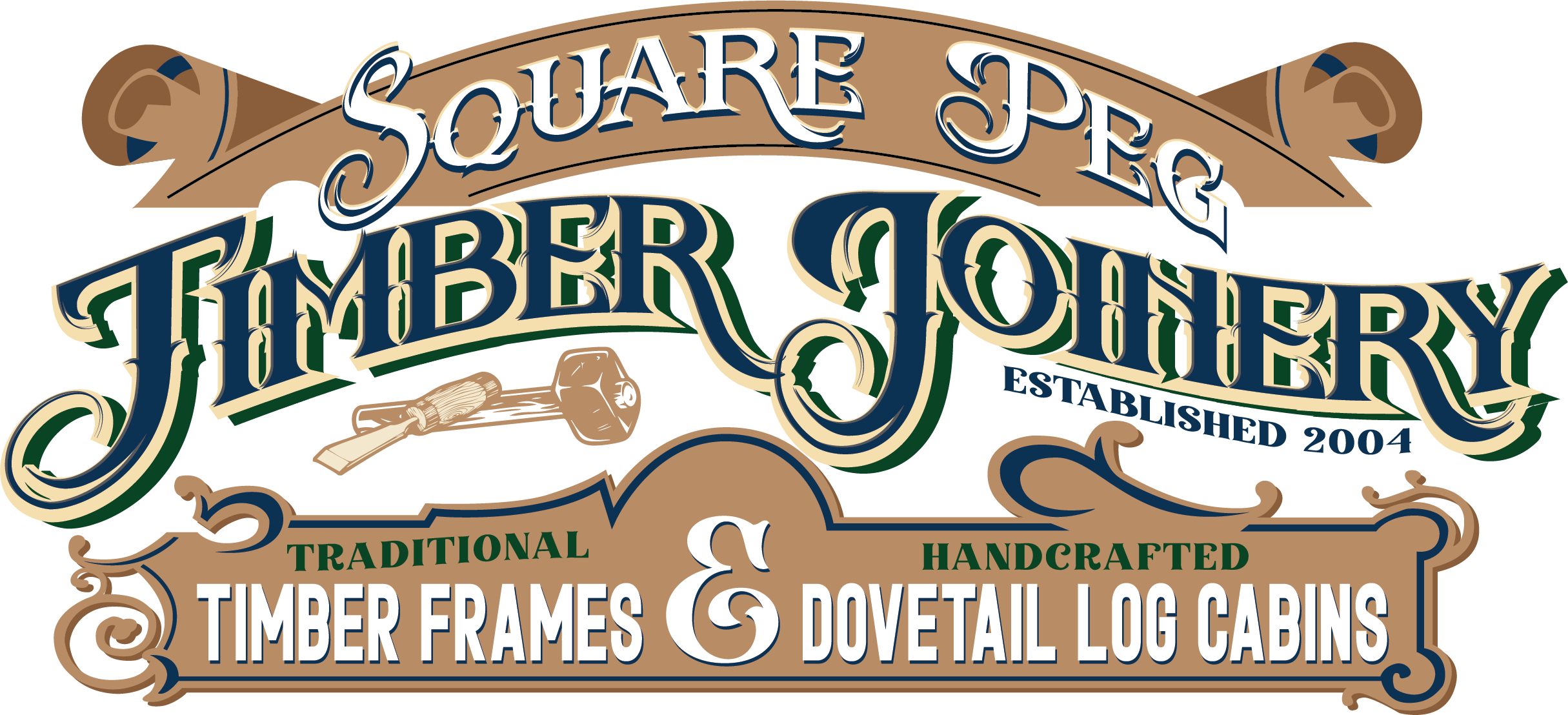Handcrafting: Lines --- of --- Separation
Pursuing a Lost Art
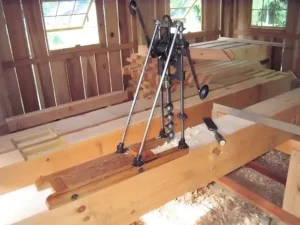
My 1880's Millers Falls boring machine doing work. Used to drill holes for mortises. Wooden base (seat) is American chestnut.
Many folks love the look of an old barn, or a house framed with heavy timbers, joined with handcrafted mortise & tenon joinery and drawn together with handmade wooden pegs, or a rustic log cabin, with the massive log walls featuring traditional chink-lines and distinctive hand-cut dovetail corner notches.
But few may realize, appreciate, or maybe even assign any level of value or significance to the methods involved when crafting a heavy timbered structure with traditional hand-tools vs one fabricated with a myriad of modern power tools. Or the vast time investment required to produce a truly handcrafted timbered structure in a one-man "handcraft" shop on a daily basis, while also factoring in the nonproduction (but still job-related) tasks that take place behind the scenes. Therefore, I’d like to place a bit more emphasis on this subject matter, and in particular, to give folks a better insight into my own process and methods of how their framework is crafted (in the event you decide that Square Peg Timber Joinery is the right choice for you). After all, whoever you end up choosing to fabricate your timber frame or log cabin, the "process and methods" will play a large part in what you will ultimately be purchasing too, so this aspect will be a vital component in your decision-making also.
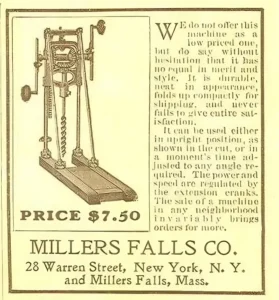
From an 1887 Millers Falls Tool catalog. Nowadays, the cost is 10x as much, & in most cases even more.
A few different philosophies and methods have evolved within the world of timber framing & log building, where many shops have embraced the vast array of specialty power tools that have been developed specifically for the timber frame/log building industry. Tools such as chain mortisers, huge 16" circular saws, power planers, band saws, power drills with drill stands, and chainsaws with guides and jigs for cutting notches. And since the revival of timber framing in the early 1980's, various "new" timber joints have been introduced to accommodate the modern designs that have sprung up as well, while still others produce timbered structures incorporating gusset-plated/bolted together/flush cut timbers, devoid of any wood-to-wood joinery. In the world of log building, the modern "D-log" profile with its "butt & pass" corners that many log home companies offer today has taken up residence in the landscape of suburban America as to what most folks perceive a log structure to really look like. Some refer to their joinery process and timbered structures as "handcrafted" & “traditional”, simply due to the fact that they hold the power tool in their hands while cutting joinery. These shops, with their larger work force and very expensive tools do indeed speed up the timeframe when compared to a traditional hand-tool process.
But are you really getting truly handcrafted timberwork?
And more importantly, to what extent does this matter to you?
Would you be satisfied with merely the illusion of craftsmanship……?
The term “handcrafting”, I suppose, can be interpreted a few different ways. All too often, I see it referenced in today’s advertising much too casually, and in my opinion, it has become misrepresented and diluted to the point that the true meanings of the concepts behind the word have been lost in the eyes of the general public. To my way of thinking, and especially as the phrase “handcrafted” applies to my own traditional views concerning the crafts of timber framing and log building, it is a methodology; a triangular bond creating a personal link between the craftsman, the wood, and his hand tools.
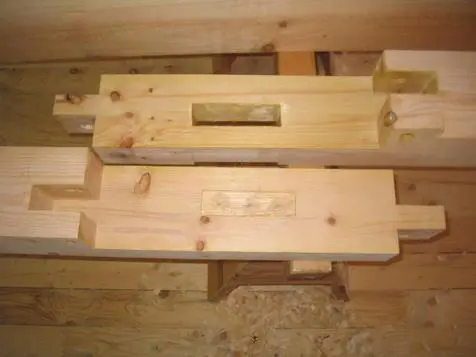
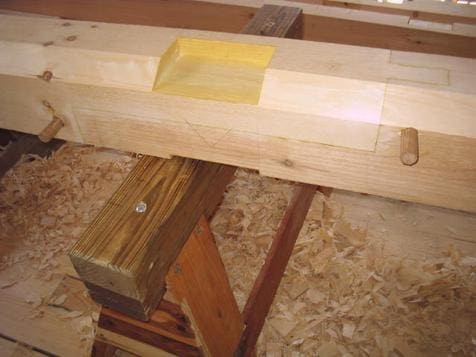
The term “handcrafting”, I suppose, can be interpreted a few different ways. All too often, I see it referenced in today’s advertising much too casually, and in my opinion, it has become misrepresented and diluted to the point that the true meanings of the concepts behind the word have been lost in the eyes of the general public. To my way of thinking, and especially as the phrase “handcrafted” applies to my own traditional views concerning the crafts of timber framing and log building, it is a methodology; a triangular bond creating a personal link between the craftsman, the wood, and his hand tools.
Some folks are simply content with the visual impact of large timbers within their framework, and it matters little to them regarding the method of attachment to one another, whether the timbers are butted/nailed together or gusset plated. Nor is it important to them whether any timber joinery (if present at all) is machine-produced or hand-cut with traditional hand tools. And that is all fine, as this is an individual preference. And I am in no way inferring that handcrafted timber joinery is of superior quality to that produced with power tools. But to others, traditional, handcrafted wood-to-wood joinery, the structures they unify, and the detail-oriented ideals of craftsmanship represent a connection to a now lost, much simpler time in our country's past. These two varying approaches to timber carpentry and the differences between them are what makes my process and methods rather unique in today’s world, separates my business from most others, and allows me to craft tradition, uniqueness, and extraordinary value into your framework.
A parallel issue that relates to the above subject matter is the widespread pervasiveness, acceptance, and even admiration in our modern culture of how fast a given task can be accomplished. From cooking 10-minute meals to completing a turnkey, suburban-tract house in a few months, our instant gratification-based society has gradually moved away from placing value and appreciation on the process and methods of how a product is created and re-directing that value and admiration to the speed with which a given task is completed or product produced. Truly handcrafted timberwork is simply not conducive to that type of mindset. I operate my business 180 degrees counter to that way of thinking. But the simple fact remains that the wood removal process involved in wood-to-wood timber joinery, and crafted by one man with non-electric, traditional hand tools does take quite some time longer than a power tool shop with multiple individuals. This awareness, understanding and (hopefully) appreciation on your part will play a big part in the successful completion of your project.
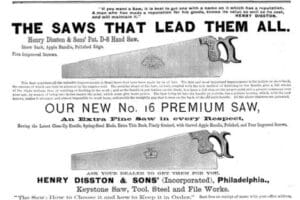 I hope this brief glimpse of how I operate Square Peg Timber Joinery has yielded a better understanding of all that’s involved with my traditional hand-tool process of crafting timber joinery. My choice of using hand-tools (vs power tools) was made long ago and was given much consideration, with the driving factors being 1) a much higher degree of personal enjoyment with my work, 2) staying as close to traditional methods as possible, 3) the mental challenge that the hand-tool learning curve presented, and 4) being a great deal more involved at the physical level with my work.
I hope this brief glimpse of how I operate Square Peg Timber Joinery has yielded a better understanding of all that’s involved with my traditional hand-tool process of crafting timber joinery. My choice of using hand-tools (vs power tools) was made long ago and was given much consideration, with the driving factors being 1) a much higher degree of personal enjoyment with my work, 2) staying as close to traditional methods as possible, 3) the mental challenge that the hand-tool learning curve presented, and 4) being a great deal more involved at the physical level with my work.
With all this being said, I also do not wish to leave you with the impression that my traditional, hand-tool approach to heavy timber carpentry translates to a more costly framework. As I have no employees to pay, no expensive heavy machinery to purchase and maintain, no rent for a shop to work in, I maintain virtually zero overhead, putting myself in a much better position to offer you a finely finished product displaying truly handcrafted wood-to-wood joinery that is a one-of-a-kind timber-framework at a very affordable price.
